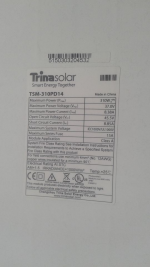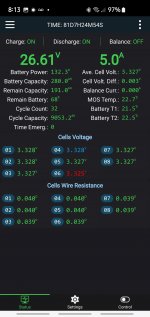Must be something in the air. I too suddenly got the urge to get myself a small Solar Power System built. I should have done this years ago when I was working and had plenty of disposable income. Recently, through a convergence of circumstances, I was able to pull out enough cash to buy 4 - 100 w panels from Harbor Freight. On sale they are $90. That is just the beginning.
Prices on Lithium LiFePO4 batteries have fallen substantially in the last year. I bought 4 - 100AH LiFePO4 Power Queen batteries that are down to $230 + tax, each, on their web site. I got a Renogy 3000 w inverter off Amazon for $365, and a 40 amp Charge Controller from HQST for $110.
After that, there is the Cables, Wire, Switches, Fuses, Bus Bars, Breakers, Connectors, Crimp Lugs and Tool, Terminal Blocks, Charge Meter, Solar Panel Tilt Mounts, 30 amp LiFePO4 Shore Power Battery Charger, and a New Multimeter/Volt Meter.
I bought some 12 vdc LED Light fixtures that I plan to wire to a few places around the house.
I ran my Sysyem on a full charge, a small Refrigerator 24/7 and my CPAP Machine at night, for 9 days straight before a couple of cloudy days depleted my batteries at midnight on day 9.
Tells me I need more Panels and Batteries. Probably 4 more each, which means another Charge Controller. I way underestimated what a small minimal System is. I'm getting close to $3000 invested, and going to need another $1200 + before I'm content. Who knows, I may just be getting started. I need to get a job and go back to work.







